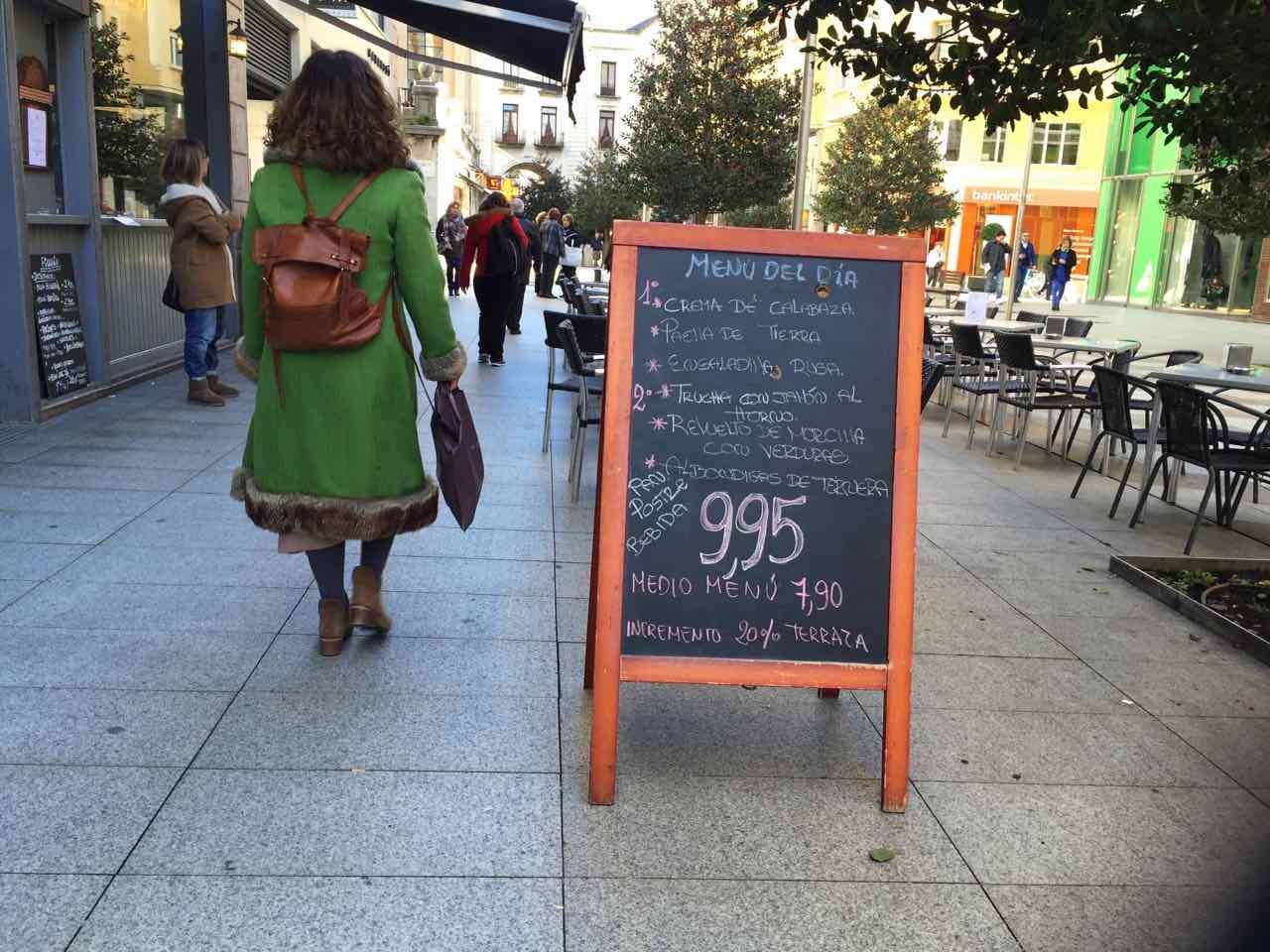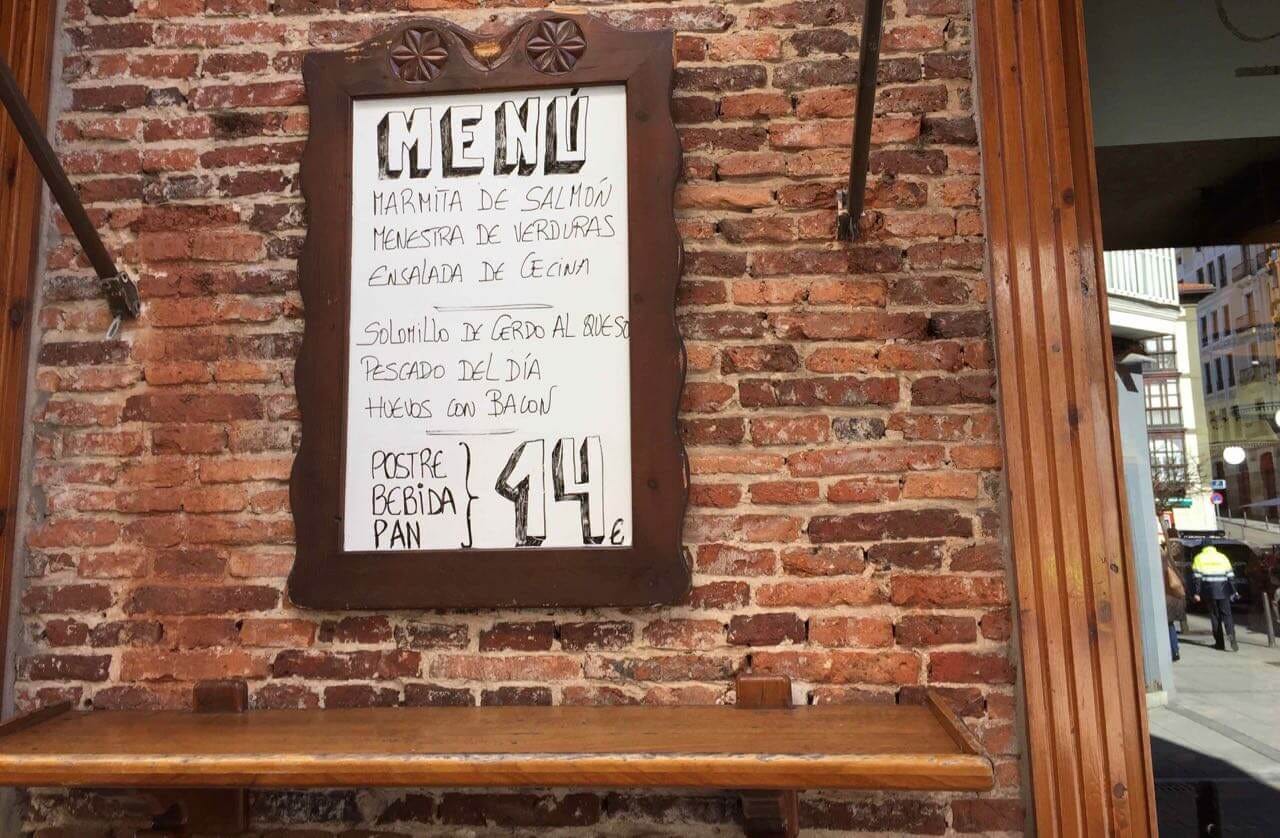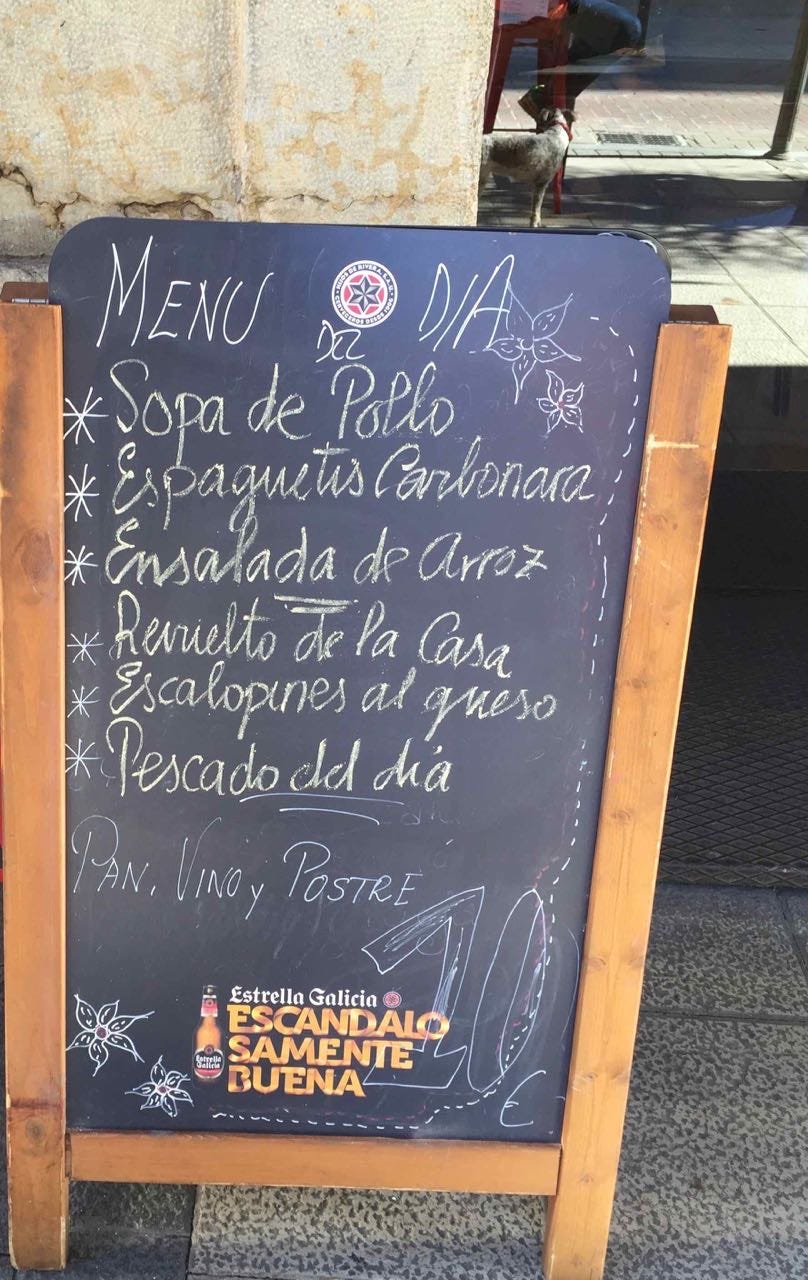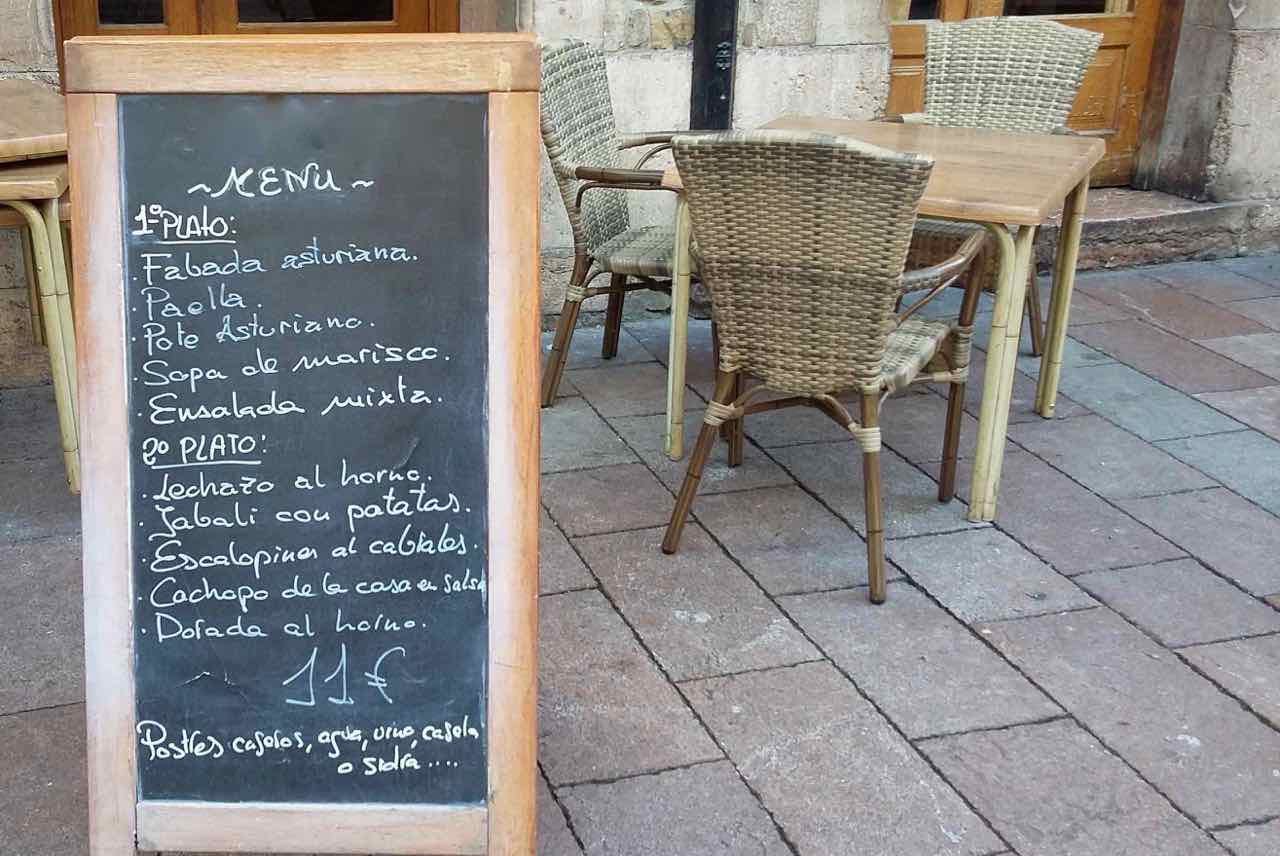The Spanish Menu del Día (Menu of the Day)
Conceived by a dictator, a tradition that cheaply opens up local eating opportunities
In Spain, the menu del dia or menu of the day is offered at restaurants during lunch. Ordering the menu del dia is the most economical way to eat in Spain and it’s also when you’ll see the most locals because lunch in the main meal of the day in Spain. Most restaurants and bars will be packed, and there will be plenty of day drinking going on around you. (Don’t ask me how many Spanish people can drink three beers at two and then go back to work.) This generously-sized meal is offered all for one price — usually under around 10 euros, but sometimes a fancier option will go up to 15, which is still a great deal I think. The menu normally includes soup or salad, bread, main course with a side dish, dessert, and coffee. Wine or water is included. Usually, you will have two or more choices for the courses. Oh, by the way, a “menu” in Spanish is this — a preset multi-course meal. The menu is called a “la carte,” or literally, the card.
Meal times in Spain
In Spain, people typically have a breakfast that’s usually comprised of bread, tomato, and olive oil, or churros and hot chocolate. They eat lunch around 2:30, a merienda or snack around 5-6 (not as popular anymore), then they have a sometimes small late-night dinner around 9. Of course, this all can be different, depending on the person and the region of Spain you’re in — dinner tends to be later in the south, earlier in the north.
The menu del dia is offered only for lunch and you will see it posted for the afternoon hours only, though you could technically have it for a very early dinner if that suits you. The traditional work break (siesta) is from 1:30 to about 4:30 and many shops will close during that time. This is typically the largest meal of the day in Spain, and I’ve found if I eat a big lunch, dinner isn’t really necessary beyond something like sardines on crackers or a salad.
History of the menu del dia
Traditionally, the menu del dia was for workers who couldn’t make it back home in time for lunch. Curiously, dictator Francisco Franco is credited with its creation. He designed a set-price tourist menu back in 1964 and replaced it with the ‘menu del dia’ in 1970 to showcase Spanish regional cuisine. Today, it still fits that original purpose — a nourishing and complete three-course meal that offers good value for money. Even if you don’t see the set-price menu board outside a restaurant, it’s always worth asking staff whether they offer a menu del dia, because they usually will.
Ordering the menu del dia
Like I said earlier, in Spanish, la carte is the term for the printed listing of all items offered. If you ask the waiter at a restaurant about the menu, he or she will probably talk about the menu del dia rather than la carte.
If a restaurant does not have its menu del dia listed, it may still be offered. You can ask the server if they have the menu of the day available by asking, “Hay un menu del dia?”
You don't have to eat from the menu of the day. You can order from the full menu as well, but most people will be eating the menu del dia because it’s cheap and filling.
Don’t be surprised if you can barely read the handwriting on the menu del dia chalkboard. Don’t be afraid to ask if you can’t decipher it of course, or just point and hope for the best. I’ve never had a truly bad meal in Spain with the exception of some over-fried pig’s ears at an old man bar.
Typical price for the menu del dia
All of the images included in this story come from menu boards in Spain in 2021-2022, where you’ll find amazing value for money when it comes to quality casual dining. You’ll come across these chalk boards in every town and village, city, and even at airports and train stations. The average price for the chalkboards you see here today is 11 euros but most of these were on the main streets. If you are prepared to walk a little bit more from the center of the city or town, you’ll find dozens of boards offering the menu del dia in Spain for under 10 euros — sometimes as low as 7-8 euros.
What's on the menu del dia?
The menu del dia is divided into three sections:
El primer plato: choose between two to three dishes. Bread is included and will be served with this course, but don’t expect butter or olive oil to go with it for some strange reason.
El segundo plato: choose between two to three dishes with sides.
El postre: the dessert, with one or two selections, and often coffee, too.
A glass of sparkling water, soda, fruit juice, beer, or wine is almost always included, too. Often when you order wine, you get a mini-carafe, so this may be your best value.
The best part of the menu del dia in my opinion is that you don’t have that many options, which may force you out of your eating habits. Maybe you’ve only had tortilla and
Where to have lunch
Pay attention to where you eat in Spain. Some restaurants offer low-quality food and will have a standard printed menu del dia. If you see a menu del dia written on a chalkboard, it is more likely to be made with fresh, local, and seasonal ingredients.
A good tip is to consult locals for the best meals or see where the crowds go—they know what the best spots are. Look for the restaurants that are filling up at 1:30 and try to go there. This is evidence that people are hurrying there to get a table because it’s good and a good deal. If it's 2:30 or 3PM and there are a lot of open tables, that restaurant might not be the best choice. Locals know best.
Other European countries also do the daily set menu. I’ve had many in France, for example. But I’ve found that Spanish restaurants are more creative and more likely to serve high price items like seafood in their menu del dias, and they’re more likely to give you high end or somewhat experimental dishes that look beautiful on the plate. This is not to say that you don’t occasionally get served something you could have cooked yourself, but that’s part of the charm for me.








